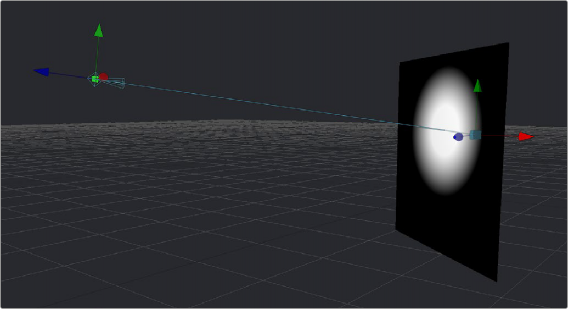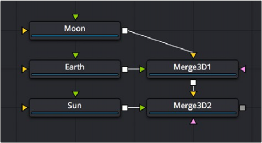
< Previous | Contents | Next >
For example, if a spotlight is required in the scene to point at an image plane, enable the spotlight’s target in the Transform tab and connect the target’s XYZ position to the image plane’s XYZ position. Now, no matter where the spotlight is moved, it will rotate to face the image plane.

A light made to face the wall using its enabled target control
Parenting
![]()
One of the many advantages of the node-based approach to 3D compositing is that parenting between objects becomes implicit in the structure of a 3D node tree. The basis for all parenting is the Merge3D node. If you’re careful about how you connect the different 3D objects you create for your scene, you can use multiple Merge3D nodes to control which combinations of objects are transformed and animated together, and which are transformed and animated separately.
For example, picture a scene with two spheres that are both connected to a Merge3D. The Merge3D can be used to rotate one sphere around the other, like the moon around the earth. Then the Merge3D can be connected to another Merge3D to create the earth and the moon orbiting around the sun.

One Merge3D with two spheres parented to another Merge3D and parenting
using three connected spheres